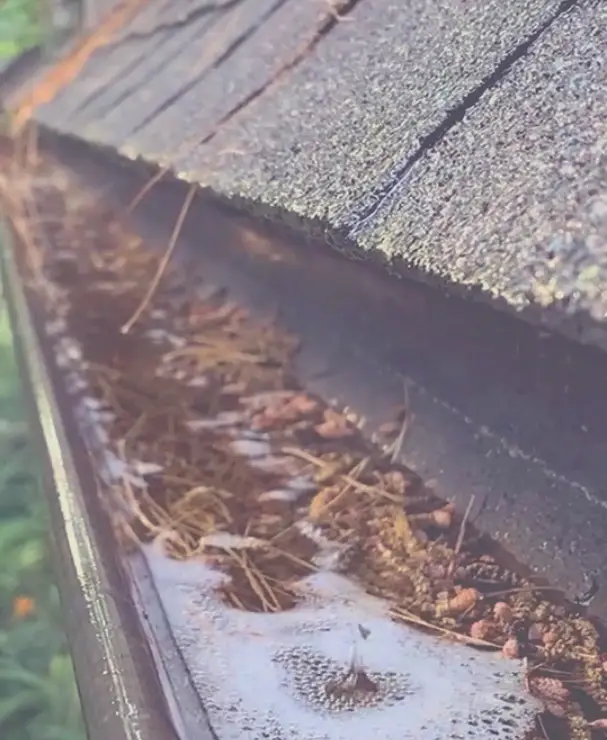Living in a region with heavy rainfall can pose unique challenges for maintaining your home. One often overlooked but critical aspect of home maintenance in these areas is an effective gutter system. Without proper gutter protection, homes are susceptible to water damage, foundation issues, and landscape erosion. By installing quality gutter covers by Gutter Topper, you can ensure that rainwater is efficiently diverted away from your home\’s structure, reducing the potential for costly damages.
gutter covers serve as a barrier against leaves, debris, and other materials that can clog gutters, especially during heavy rain. When gutters overflow due to blockages, water can seep into your home\’s foundation, causing cracks and leaks.
Additionally, overflow can lead to soil erosion around your property, which can undermine your landscaping efforts. With the right gutter covers, you can mitigate these risks and keep your home safe and dry, no matter how much it rains.
Understanding the Importance of Gutter Covers in Heavy Rainfall Areas
Living in areas with heavy rainfall means our gutters face a lot of stress. Without proper protection, gutters can easily get clogged with leaves, twigs, and other debris, preventing rainwater from flowing through.
This can lead to overflowing gutters, which can cause water damage to our roofs, walls, and foundations. In some cases, it might even lead to erosion around the home’s base. This shows how essential it is to keep gutters clear and functioning correctly during heavy rains.
gutter covers are a great solution in such climates. They help by keeping debris out while allowing rainwater to pass through. This means our gutters stay clear and can handle the large volumes of water that come with heavy rainfall. By ensuring smooth water flow, gutter covers help in preventing many potential problems. This makes them an important investment for anyone living in regions prone to heavy rain.
Key Features to Look for in Gutter Covers
When choosing gutter covers, several important features should be looked for to ensure they perform well. First, durable materials are crucial. gutter covers made from strong materials like stainless steel or heavy-duty aluminum can withstand harsh weather conditions and last longer, effectively protecting our gutters for many years.
Next, we should consider the design of the gutter cover. A good design should effectively keep various types of debris out while allowing rainwater to flow through freely. Some designs have fine mesh screens or slotted openings that are perfect for this job.
Additionally, it’s important to choose gutter covers that are easy to install and maintain. Covers that can be easily attached to the existing gutters and don’t require frequent cleaning can save us a lot of time and effort.
Comparing Different Types of Gutter Covers
There are several types of gutter covers available, each with its own benefits and drawbacks. One popular type is the mesh gutter cover. Mesh covers have small holes that block leaves and debris while allowing water to flow through. These are effective but might require occasional cleaning to remove debris that can sit on top of the mesh.
Another option is the reverse curve gutter cover. This design allows water to flow over a curved surface and into the gutter, while debris slides right off. Reverse curve covers are great for keeping out larger debris but may be less effective for tiny particles like pine needles.
Foamed gutter covers are another type. They fit inside the gutter and allow water to pass through the porous material while blocking debris. These are easy to install but may require frequent replacement.
Lastly, bottle brush gutter covers use bristles to trap debris while allowing water to flow through. They\’re easy to install but can be less efficient over time as debris builds up in the bristles. Choosing the right type of gutter cover depends on the specific needs of our home and the kind of debris we typically encounter.
Installation Tips for Optimal Performance in Heavy Rainfall Areas
Installing gutter covers properly is key to ensuring their effectiveness, especially in heavy rainfall areas. Start by cleaning the existing gutters thoroughly to remove any debris. This ensures a smooth surface for the new covers.
Next, measure the length of your gutters to make sure you have enough material for full coverage. Cutting the covers into sections that fit snugly helps prevent gaps where debris can slip through.
When installing, pay attention to securing the covers firmly. Loose covers can be blown away by strong winds, negating their protective benefits. Ensure that the covers are placed correctly with the positioning sloped slightly to allow better water flow. This prevents water buildup that could lead to overflow.
Regular inspections after installation are also crucial. Check the covers periodically to ensure they remain securely attached and are free of any blockages. In heavy rainfall areas, it’s a good idea to double-check after a storm to ensure they are functioning correctly.
Following these tips, we can ensure our gutter covers perform optimally, providing effective protection during heavy rains.
Finding the Best Gutter Covers for Heavy Rains
Installing gutter covers, especially in heavy rainfall areas, is a wise investment in maintaining our homes. By understanding their importance and the key features to look for, we can choose the right guards that fit our needs. Comparing different types of gutter covers helps us make informed decisions based on the kind of debris we encounter. Proper installation further ensures these guards perform well and last long, protecting our gutters from potential damage.
At Gutter Topper, we are dedicated to providing superior gutter protection solutions. Our range of patented products, including Leaf Terminator, offers reliable and durable protection for homes in various climates. To learn more about our gutter covers and how they can help safeguard your home, visit Gutter Topper today. We\’re here to help you find the best solution for your gutter protection needs.




